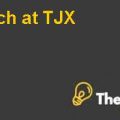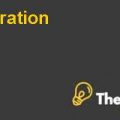
SURGERY WITH BLUNT TOOLS: RESTRUCTURING AND AMBIGUITY AT UMBRA HEALTH PARTNERS
1. Applicable Principles of the Leadership on the Case
The applicable principles of leadership in this case are lack of professional competence at the top level, which has its trickle down affect on the sub ordinates. People at Umbra don’t want to pursue self-improvisation and want to drag the traditional ways of conducting operations due to which it is lacking operational efficiencies in processing client request and data reposition. Moreover, the leadership in case of Umbra lacks in its ability to seek and accept responsibility. It was evident from the case that throughout the hierarchal levels nobody owned the work piece and instead the reward is reaped by the immediate authority although the blame is shouldered to those under his or her supervision. The subordinates lacked any direction in which they were supposed to gear their efforts and there was a very informal way of handling the system.
The nursing retention rate at Umbra was also low as much as one to two months as compared to the staff of the home support that stayed for a longer period of time. There were no performance based rewards or compensation for the employees and no plans to consider their welfare. The organization followed a laissez-faire management style and left the task on the nurse after processing the referral and checking their availability. Although, involvement of the manager is high to the extent that they can interrupt productive ideas and project proposed from other managers but at the operational level, for gathering follow up from the employees and rectifying operational efficiencies, the performance seem to lag. In addition, there was a lack of employment training at Umbra due to which the nurses and other staff were unable to develop the necessary attitude and respect for the immediate supervisor. The environment created by the employees was such which gave leverage to employees to take everything for granted. Umbra also lacked in its ability to incorporate useful insights form the employees to get operational efficiencies and therefore it didn’t allow employee participation in the decision making process.
2. 10 Leadership Attributes Evident In the Case
The attribute that is evident from the case vary widely from person to person. Considering Jim Tuan, the leadership style that Tuan had adopted featured attributes that is honesty with the work, the ability to delegate responsibility and commitment with the work. However, if one talks about Peggy Jackson, she didn’t posses leadership skills at all and her supervision as victim of laissez-faire leadership style; therefore, the leadership didn’t produce productive results. Though, the sense of humor used by Peggy was not helping the organization to become competitive in any manner.
Mike Kettle had a lot of experience and ability to inspire and lead but he had a dual mode of working and his credibility in front of his juniors was distorted when they came to know about his dual policies and two-tongued way of communicating with the employees. In essence, the ten leadership attributes that were evident from the case are: honesty, positive attitude, creativity in providing solutions to the problems confronted, sense of humor, commitment, laziness, lack of integrity amongst the employees, authoritative style of leadership, lack in ability to make sound and timely decisions, inability to hold responsibility and lack in ability to sustain transparency between employees and balanced communication with all employees with no use of two-tongued approach.
3. Concepts and Principles That Bring Value to the Situation without Tension
It is evident from the case, that Umbra is not able to retain employees more specifically nurses as compared to the home support staff. Without any further tension, instead of piling up work on employees’ without recognizing their efforts at the initial level, the organization should focus on one project at a time. It is seen in the case that there is a lack of goals for the managers to work on. When they are asked to perform on a specific project, they put their utmost efforts in making the project successful but when the time of recognition comes so the management backs-off by complaining that this isn’t the strategic aim of the organization. It is therefore very important for the organization to assign SMART goals to its employees. The term SMART in management refers to Specific, Measurable, Attainable, Realistic and Timely. When the top management will have the line of sight then it can be expected of them to make the vision clear to their subordinates.
In addition to this, the organization lacks in participatory structures, allowing subordinates to raise their voice and participate actively in the decision making process. The organization is in the service industry and needs to have a consensus in opinion from all hierarchal levels. As Umbra does not embrace communal values, hence, this is not going to help it progress in the future. Umbra needs to develop an environment in .............................
This is just a sample partial case solution. Please place the order on the website to order your own originally done case solution.
This case is the conversion Umbra Health Partners (Umbra), a private Canadian health organization, as it undergoes extensive restructuring in the light of the branch manager, who is a recent graduate of the MBA program in health care administration. The first part discusses the role of the case manager of the branch, and the last part of the body is considering a new role in the corporate office. When he was first hired by Umbra, he assesses the organizational problems inherent in the branch and in the organization as a whole. As Branch Manager, he is trying to find ways to solve these problems and improve the reliability of its subsidiary. Later, he was appointed to the position in the corporate office, where he examines the organizational problems at the corporate level (some of which are reflected in the branch), such as a lack of checks and a vague sense of the direction the organization is headed. Taken together, it offers plenty of material for discussion of the complexities of organizational change. "Hide
by Frost Rerup, Tuan Jim Source: Richard Ivey School of Business Foundation 26 pages. Publication Date: July 7, 2008. Prod. #: 907C38-PDF-ENG













